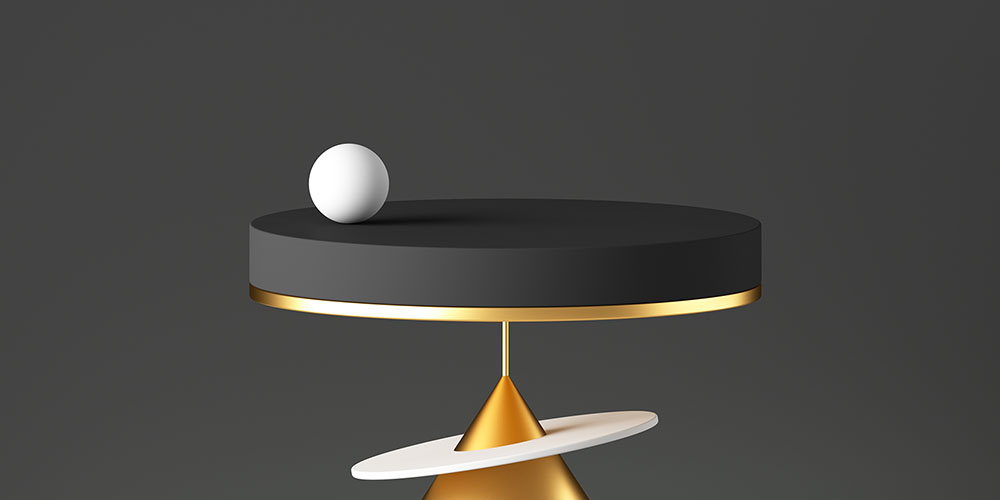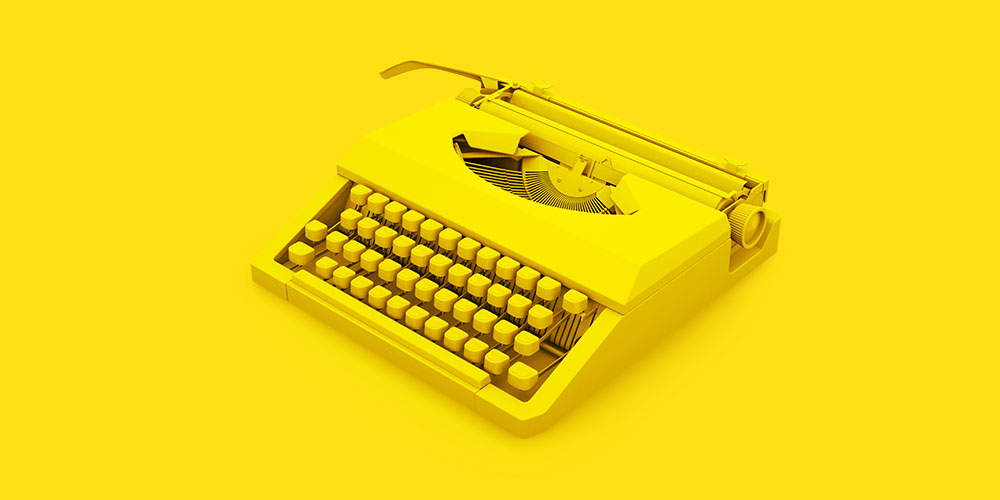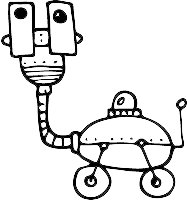Email marketing for games can be intimidating. Player journeys are nonlinear. Engagement relies on timing and storytelling. Email design gets wild.
But on the flip side, you can reach players directly instead of competing for their attention on social. Done right, your emails can turn casual players into loyal fans.
In this post, we’ve gathered the key insights you need to succeed in this niche. You’ll get inspiration from real email examples, and start creating emails that feel like part of your game experience.
Don’t wait for the muse. Apply this step-by-step method to write high-performing email campaigns in hours, not weeks.
How email marketing can boost game growth
With access to player behavior and in-game data, you’re able to send tailored messages that improve engagement and conversions, such as a reminder to complete a quest or a special offer on their favorite character.
Over time, consistent and meaningful communication helps build loyalty and long-term engagement.
Unlike classic software marketing, gaming brand emails aren’t just about features and renewals. They’re part of the game experience.
That changes the goals, the data you use, the creatives, and how you measure success. Players have emotional attachments to characters, progression, and social status. Emails can tap into this.
Implementing email marketing automation for games
Games — desktop, console, web-based, or mobile — are still considered software, so email marketing automation works the same way. Here are your typical implementation steps:
Step 1. Integrate with an email automation tool
Choose one that supports segmentation, custom user behavior tracking, and integrates with your existing tech stack.
Create a data tracking plan capturing event data (e.g. signups, purchases, inactivity), client-side actions (e.g. logins, gameplay events), and user properties (e.g. device type, subscription status). Share this plan with your engineering team to feed data into your email platform.
Step 2. Segment your email list
Collect subscriber information via sign-up forms and client-side tracking. Segment players by lifecycle stage — onboarding, trial-to-paid (or upgrade), and retention — based on your customer journey map.
Step 3. Plan your workflows
Define email types and triggers based on behavior data. Build drip sequences that continue even without user actions (see our “Planning for the Worst” method), set smart exit conditions (e.g. after upgrade), and branch workflows by usage, roles, or progress.
Step 4. Write your email content
Each email should only focus on one clear message or action (see our Atomic Emails method). Gather insights and resources, generate ideas, organize them into a campaign storyboard, and write emails with strong CTAs and subject lines.
Step 5. Assemble your workflows
In your automation tool, connect triggers (i.e. sign-ups, in-game actions) to email steps, set conditions/delays, and test workflows thoroughly before launch.
Step 6. Optimize over time
Track key metrics (i.e. open, click-through, conversion rates), run A/B tests on subject lines, content, and CTAs, and refine based on player behavior.
What game emails typically look like
Game emails have a distinct look and feel from your typical software emails. Common features include:
- Lots of visual elements. Game emails are often image heavy, showcasing key art, screenshots, character designs, or animated graphics to immerse readers in the game’s world right away.
- Heavy use of videos. Trailers, gameplay previews, clips, or simple GIFs, are embedded and are often linked to the actual video. This builds anticipation and excitement by giving players a quick, dynamic preview of what’s coming.
- Dark color scheme. Many game brands lean toward darker, high-contrast designs that match the game’s aesthetic to make the visuals pop. Of course, this depends on the game’s colors.
- Long emails. These emails are relatively longer than typical marketing emails, with sections for updates, patch notes, feature highlights, and event announcements.
- Multiple CTAs. Instead of a single CTA button, you’ll often find several CTAs encouraging readers to play, pre-order, explore new content, or engage on social media.
- Platform and social links. Links to the game platform, and social channels are common to help drive engagement.
You could follow these common practices or veer away and do the opposite (e.g. try plain text emails). Remember, your emails should follow your branding.
Types of emails gaming companies should send
Let’s look at the different email types you should send your email list subscribers, what to include in those emails, and examples from real gaming companies.
Welcome emails
Welcome emails are a great opportunity to introduce your game and your brand to players. These emails usually include:
- Setup and installation process
- Game features
- Characters of the game
- Other recommended games by your studio
- Links to your gaming community
Here’s the first email in the welcome series from Blizzard Entertainment when a user signs up for their Battle.net platform:

This email tells the player that they’ll get access to all of Blizzard’s gaming franchises, how to connect from a desktop or mobile, how to install games, and adding games on a wishlist.
And here’s the second email in their welcome series:

This time, they introduce several games the reader can play with the Battle.net platform, each with a CTA to download or play the game.
Meanwhile, here is the second email in a welcome series by Ubisoft. It highlights the social features available on their Uplay platform and promotes their gaming community.

And here is Rockstar Games’ welcome email after a player signs up for their email list.
Subject: Welcome to the Rockstar Propaganda Email List

Their email tells the reader what type of content they’ll be receiving in future emails, how to enable 2-step verification for the player’s account, why they should download the dedicated games launcher, and a link to their newswire should the reader want more news about Rockstar’s games.
Some companies send welcome emails for every new game the player starts. Here’s one from PlayStation.
Subject: Welcome to Marvel’s Spider-Man 2

This email gives the reader a brief overview of Marvel’s Spider-Man 2, introducing its main characters, the setting, and character abilities.
Product update or release emails
Let players know about changes to the games they’re playing. These can include new editions of a game, sequels or new installments of a game franchise, new characters or items, availability on other gaming platforms, etc.
Here’s an example of a product update email from Rockstar Games for Grand Theft Auto Online. This email announces a new motorcycle model available in the game and where to get it.

Here’s Xbox’s email showcasing what to expect in FC™ 24 and promoting pre-orders for the game.
Subject: [First name], hit the pitch and play EA SPORTS FC™ 24 today!

Meanwhile, Ubisoft’s announcement email about the release of Assassin’s Creed Mirage highlights the game’s trailer to set player’s expectations. The secondary CTAs redirect to platform-specific pages to buy the game.
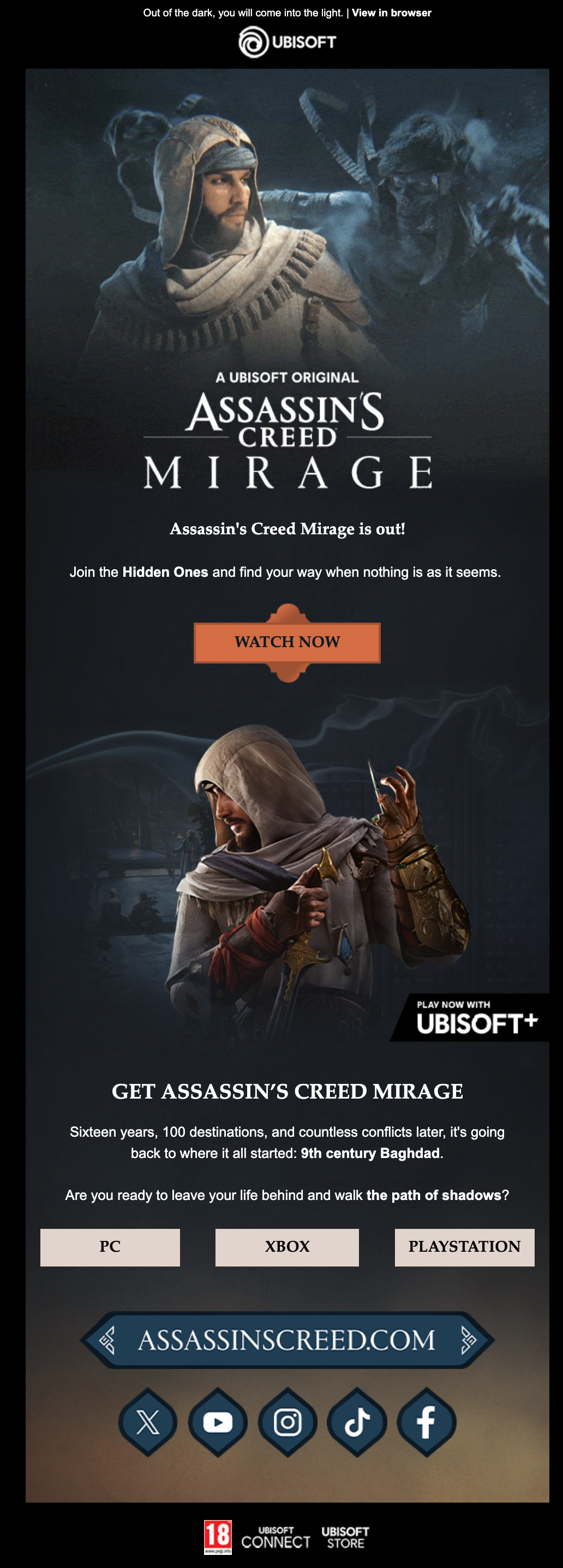
And here’s their announcement email for the launch of Tom Clancy’s The Division on mobile. They also give users the chance to play the game before its official release.

Tips and tutorials
The right balance of challenge and steady progress keeps players hooked on games. You can support this by sharing tips and strategies players can apply in their next session.
Here’s a great example from The New York Times Games.
Subject: How many words can you make?

Their email shares strategies from their community of Spelling Bee solvers. The primary CTA encourages readers to play and apply the strategies, while the secondary CTA links to the forum for more advice from other solvers.
Re-engagement/win-back emails
Re-engagement emails can get inactive players back into the game. The best win-back emails are hyper-personalized based on player activity and in-game narratives.
Using player activity details in your emails can help motivate them to continue with the game mission or event. For example, here’s a Ubisoft’s win-back email for The Division 2. It creates urgency using a plot hook:
“Agent [player name], as one of the brave few sworn to protect what remains, we’re counting on you to return to D.C. and fight.”

This encourages the player to pick up from where they left off. It’s personalized, memorable, and will be more effective than a generic win-back email.
By looking into a player’s history, you can identify their interests and preferences. You can use these insights to promote relevant events, challenges, characters, or other in-game features — re-engaging players with content they’re more likely to enjoy.
Here’s a good example from Steam. This email was sent to players who’ve played Counter-Strike: Global Offensive.
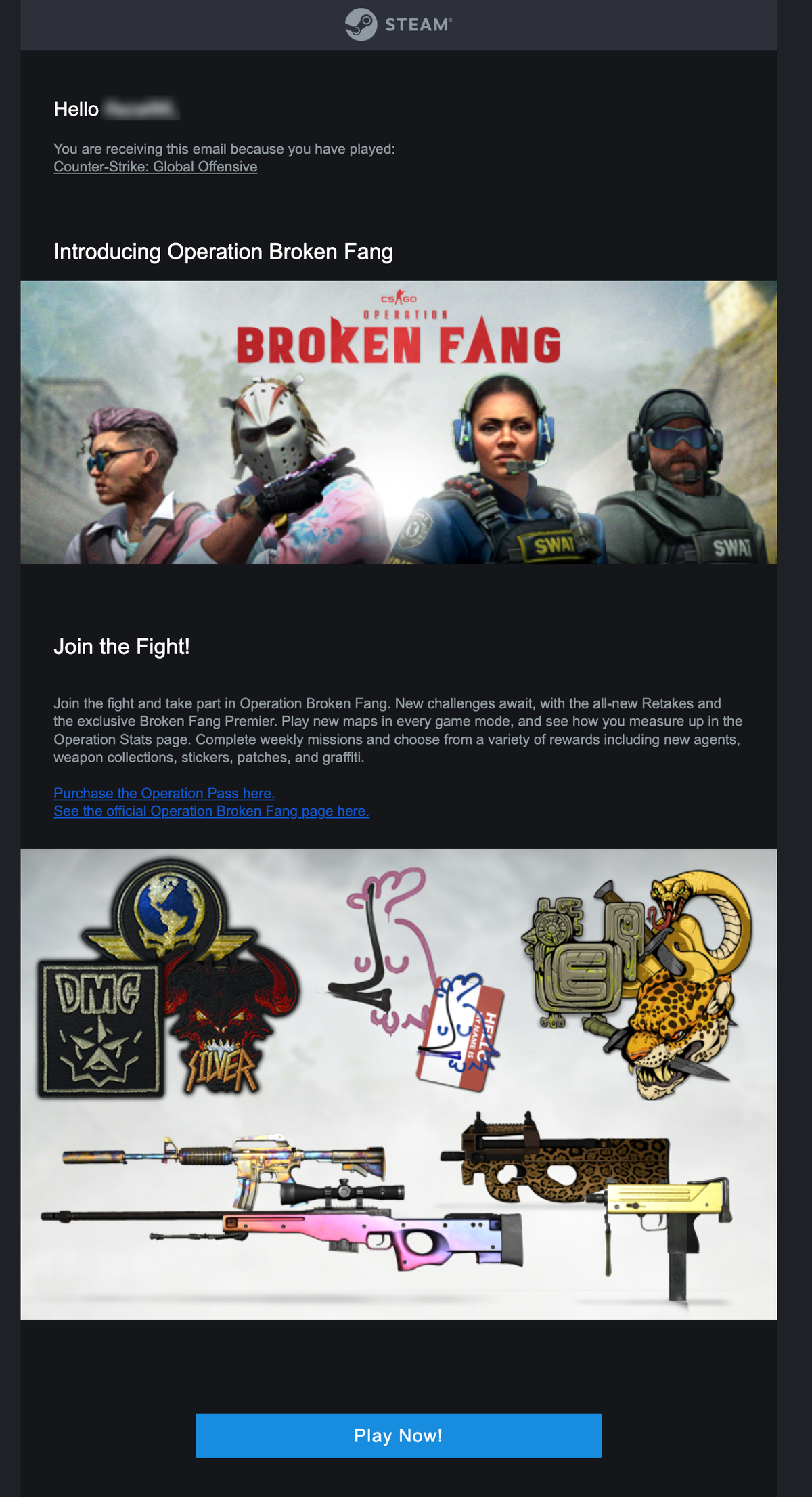
What if a player’s favorite character personally invited them to return to the game?
That’s exactly what you see in this email from MiHoYo for Genshin Impact. Thanks to Philippe Wong for contributing this example.
Subject: This one’s got your name on it! | Genshin Impact

It contains an audio message from the game character Navia delivered in her signature tone and voice-over, along with a CTAs to return to the game.
Milestone emails
Milestone emails boost retention by recognizing player achievements and loyalty. This is also a great way to re-engage inactive users by highlighting their game progress.
This year-in-review email from Ubisoft highlights player milestones which include number of gaming sessions and worlds discovered, with a link to the full statistics.

And here’s their email that highlights game progress in Far Cry 6. It shows a message from El Presidente based on the player’s gaming stats, and shows the specific stats like time played and ambushes completed.

Meanwhile, here’s PlayStation’s email celebrating the player’s achievement of getting the platinum trophy for Marvel’s Spider-Man 2.
Subject: Marvel’s Spider-Man 2 Platinum trophy unlocked

This email highlights the player’s best moments throughout the game and shows game recommendations from the Spider-man franchise.
Aside from gaming progress and achievements, you can also celebrate player anniversaries in a big way with email.
Here’s an example from Genshin Impact. Thanks to Philippe Wong for contributing this example.
Subject: It’s Been a Year Since Genshin Impact Has Accompanied You, Traveler

This anniversary email thanks the player with an in-game gift and promotes personalized anniversary events: the “Anniversary Theater”, where players can revisit their best moments from their journey, and “A Message in Time”, where players can create their personalized anniversary card with a chance to win a special in-game item.
Promotional and monetization emails
These emails build hype and secure early engagement. The goal is to encourage the purchase of games, in-game items and features, signing up to paid gaming subscriptions, among others..
By tying promotions to real-world holidays or in-game events, you can boost logins. Common examples include early access offers, flash sales, refer-a-friend campaigns, free bonuses, and seasonal passes.
This email promotes a limited time discount on Rainbow Six Siege which features a countdown timer to create urgency and spark FOMO.
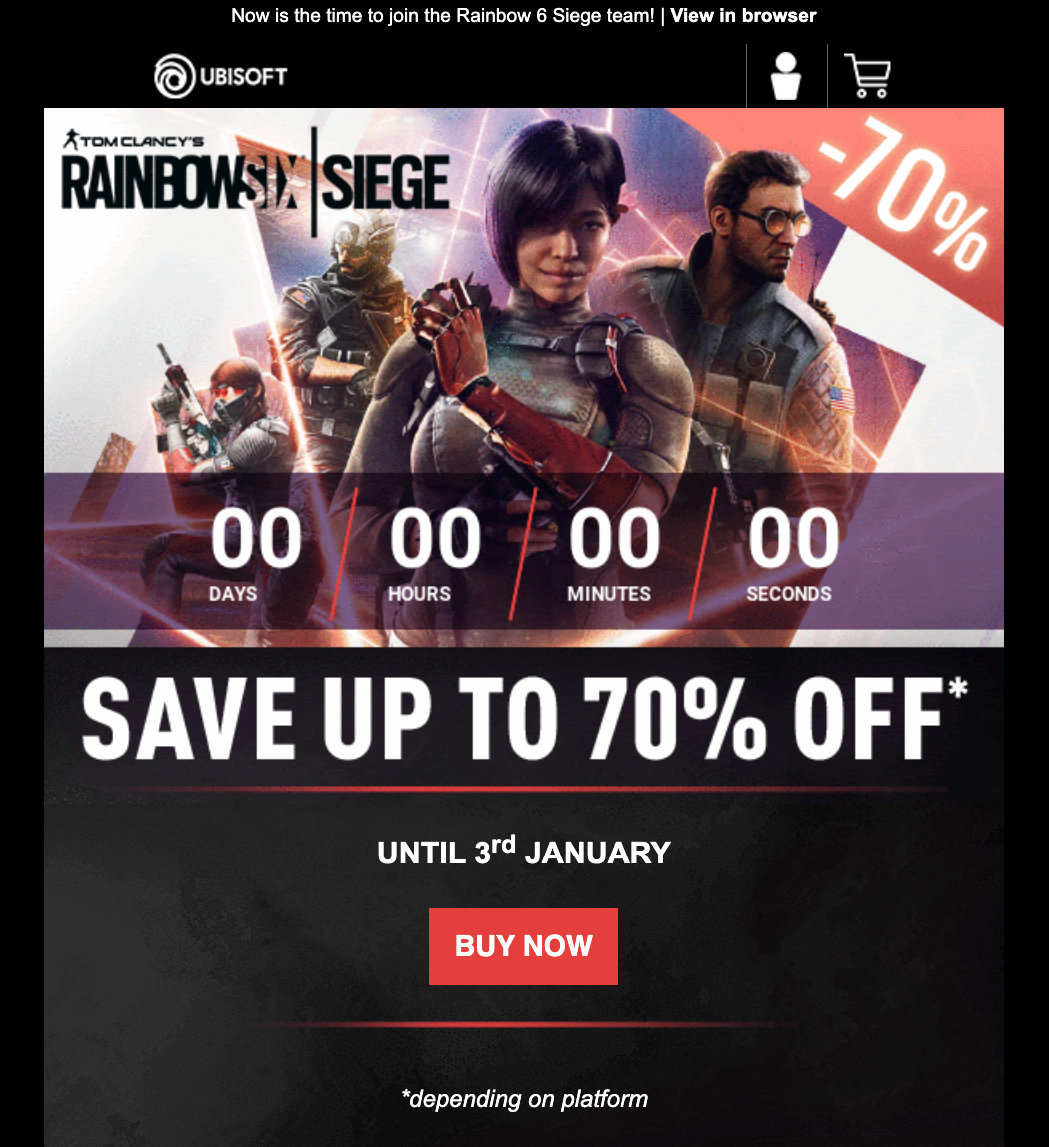
Here’s an example of a seasonal sale email from the gaming marketplace, Steam. Instead of a generic announcement, it highlights discounts tailored to the player’s interests.
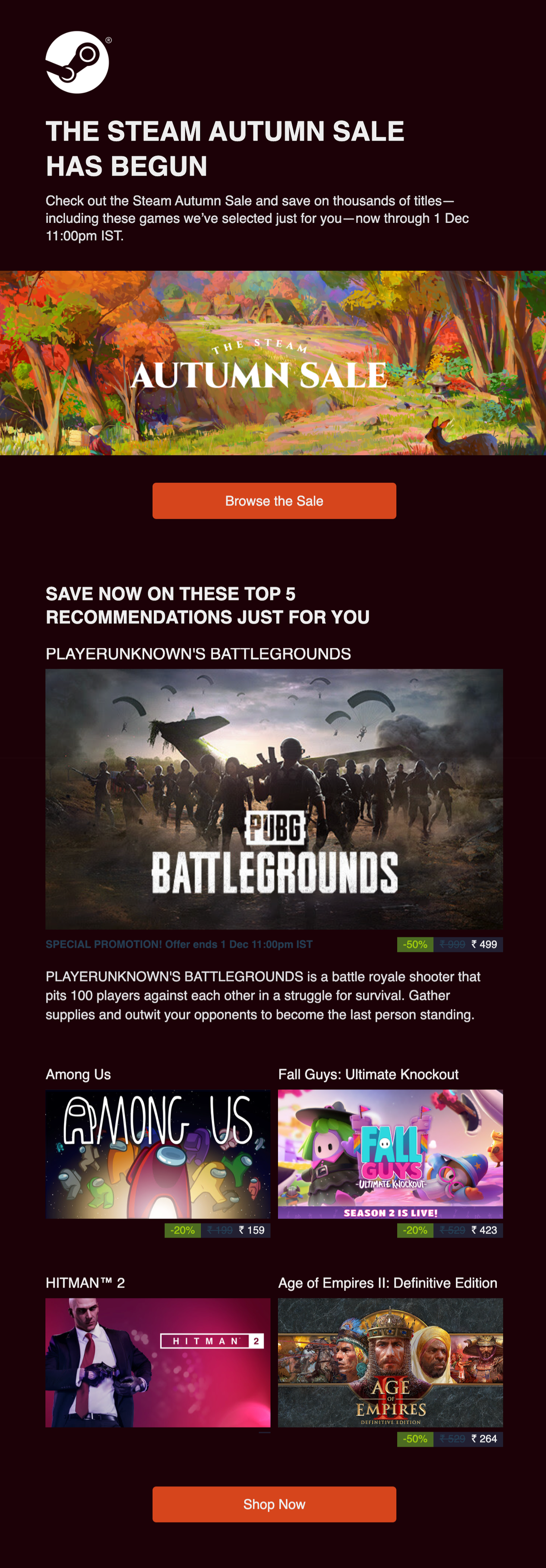
Here’s Ubisoft’s promotional email for one of their summer sales. It’s a straightforward one highlighting the details of the sale:
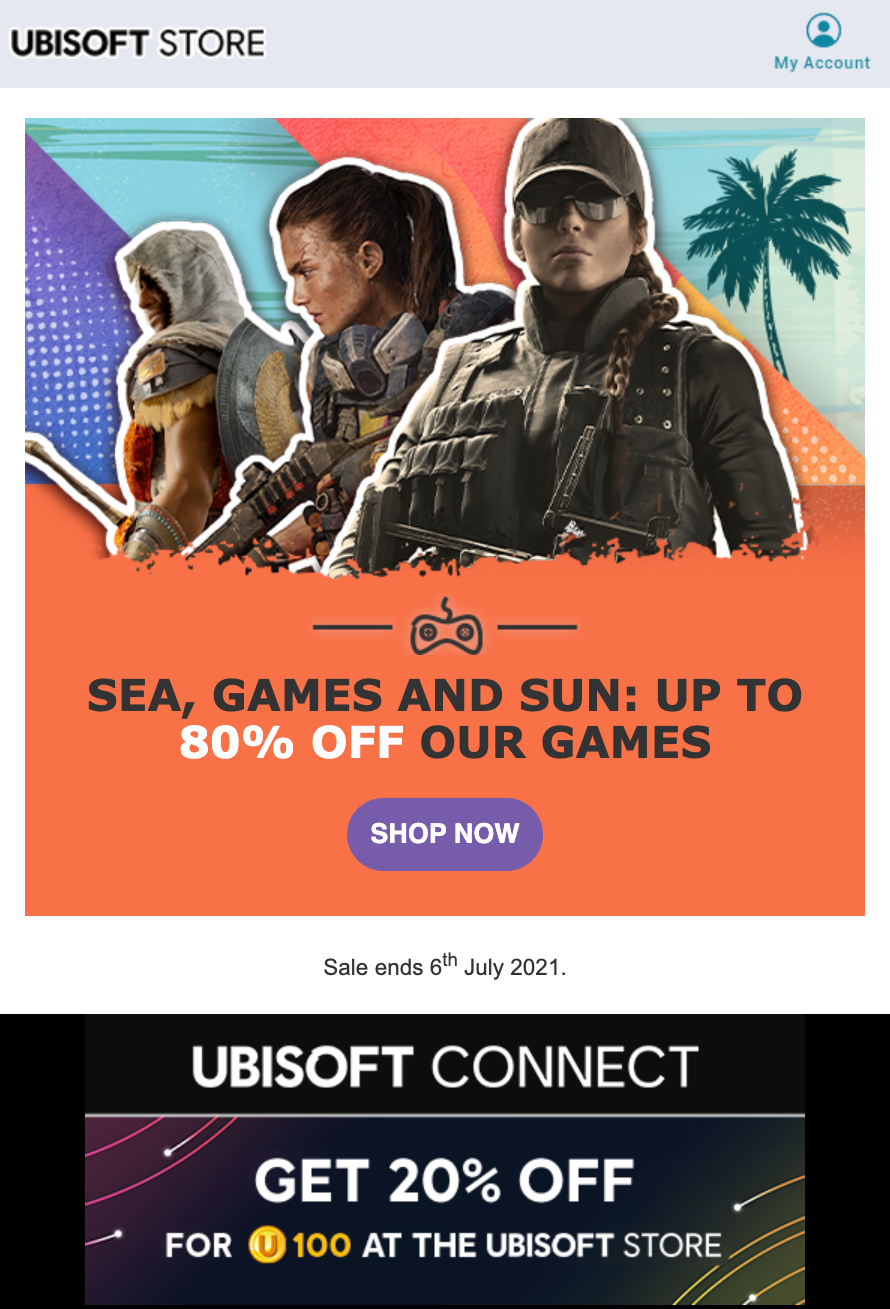
Meanwhile, here’s Rockstar Games’ newsletter that highlighted their holiday sale. The section highlights popular titles that players can get at the best prices during the sale.

Here’s Ubisoft’s email promoting Far Cry 6’s season pass. It also mentions a discount offer for their Ubisoft+ subscription.
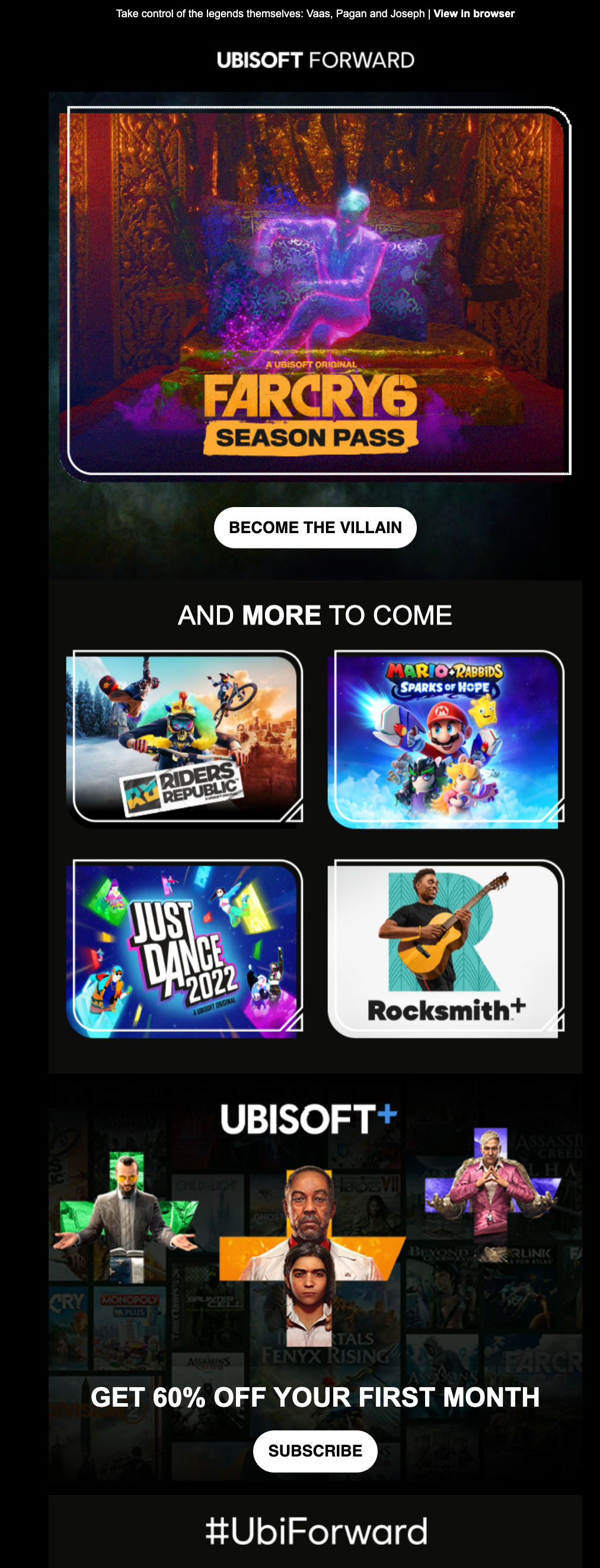
Event announcement
Event announcement emails boost participation for in-game events or attendance for live ones (i.e. livestreams, YouTube Live sessions, or in-game broadcasts). To drive more interest, highlight what players can expect such as reveals, rewards, or special guests.
Here’s Ubisoft’s email for their Ubisoft Forward livestream event:
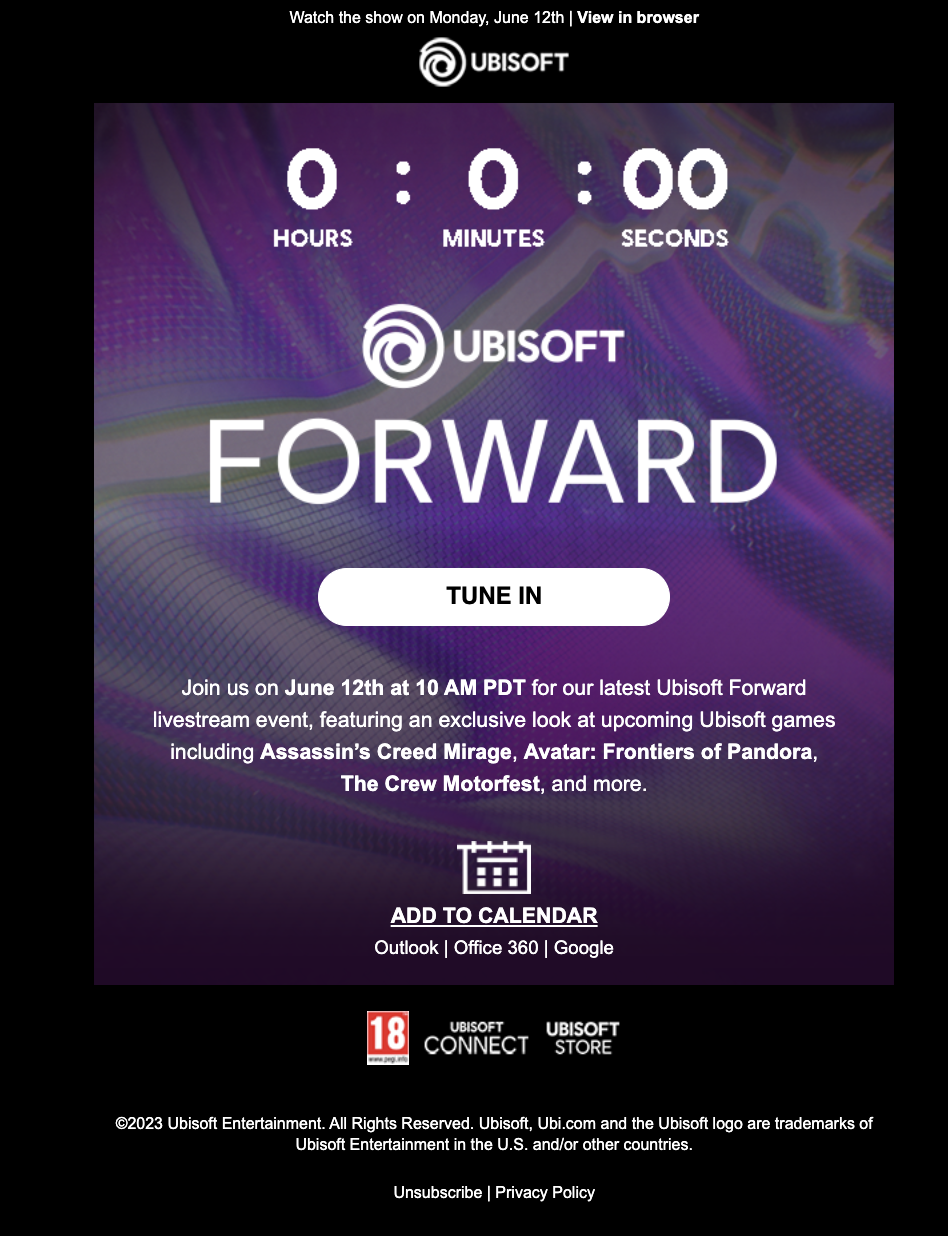
The email uses a countdown timer to build excitement for the livestream event. Aside from highlighting the date and time, they also mention that players will get exclusive looks on highly-anticipated game titles.
Meanwhile, here’s Rockstar Games’ email promoting the in-game event on Grand Theft Auto Online.
Subject: Cop a New LSPD Outfit in the GTA Online Neighborhood Watch Event

This email highlights the prizes players can get if they participate in the in-game event. They also mention an in-game sale on vehicles they can use for the event.
Here’s another example promoting an in-game event.
Subject: Gigantamax Butterfree: A dazzling battle takes flight!

The first section of this email from Pokemon GO talks about a character that’s appearing for the first time in the game and the event bonuses players can get during the Max Battle Day event. The second section highlights other upcoming in-game and in-person events.
Newsletters
Gaming newsletters can be more than just about sharing game updates. They’re a great way to share a variety of content—gameplay tips, player or community spotlights, fan art, and more. This mix keeps your audience connected to the game.
Forge of Empires uses a great way to increase email newsletter subscriptions right from the start. During the sign up process, users will be required to verify their email address. This verification email also serves as a double opt-in message to their email list.

And here’s the Halloween edition of Rockstar Games’ newsletter.
Subject: Rockstar Broadcast: Happy Halloween!

Not only do they promote in-game Halloween events and special items, but they also have a dedicated section about songs they’ve featured on their games.
Time to boost player engagement with emails
Email marketing for games isn’t just about pushing sales. These emails are part of players’ gaming experience, use it to maintain engagement and build lasting loyalty.
Now that you know how to start email marketing for your game brand, it’s time to take the first steps.
Don’t wait for the muse. Apply this step-by-step method to write high-performing email campaigns in hours, not weeks.



